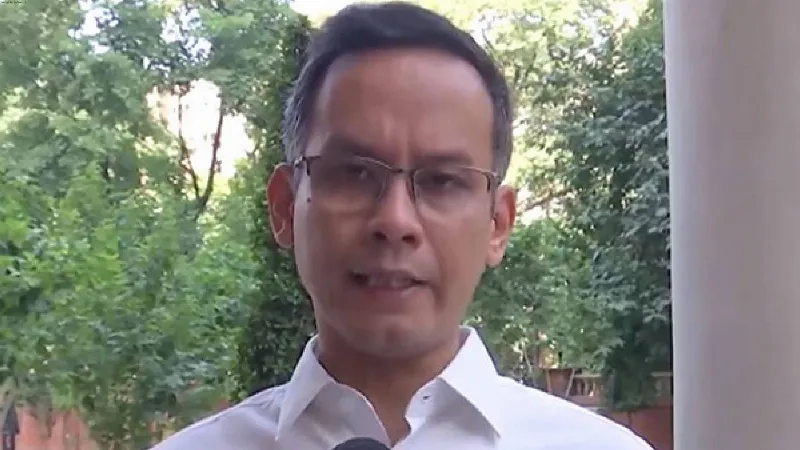Latest News
The Deeper Meaning of “In the Beginning Was the Word”

Ever since I first read the words, I’ve been fascinated by the opening verse of the Gospel of John: “In the beginning was the Word, and the Word was with God, and the Word was God.”
This has always been taken as one of the most mystical passages in the New Testament, but this wasn’t the source of my fascination, which continues to this day. I became fixated on the phrase, “.. and the Word was with God, and the Word was God.”
The meaning, if taken literally, is that the divine creation was language. Giving words this kind of cosmic creative power is hard to fathom. A word is a vibration with intention. A sound signifies a meaning. We say “tree” to signify an object, “love” to signify a deep emotion, and “God” to signify a transcendent reality.
Mysticism isn’t the flavour of the day in modern secular society dominated by science and technology. Quantum physics has no problem with the creative power of vibrations—the physical creation can be reduced to ripples in the quantum field.
The sticking point is meaning. How did the raw vibrations of subatomic particles start to mean tree, love, or God, in fact, any meaning at all?
That’s the crux of a mystery that extends far beyond religion. In the worldview of the ancient Vedic seers, in common with the mystical strain of Kabbalah in Judaism, sound is primordial, and there is an entire area of learning known in Sanskrit as Shabda, that ascribes specific creative powers to every syllable in the language— the best-known example of this are the mantras used in meditation, but there are also ritual chants that are designed to bring about change in a person’s life.
These strains of belief remain beliefs without evidence that sounds/letters/ words are somehow key in the process of creation.
A startling clue emerged recently when brain scan technology became so refined that patterns of brain activity can be linked to the words a person is thinking. This also operates in reverse. If your brain is outfitted with sensitive electric sensors, you can think of words that will then appear on a computer screen.
Besides being an amazing breakthrough, this discovery links vibrations and meaning inseparably. I’m calling this a clue, not the actual answer to the mystery of language and creativity. What is beyond dispute is that around 40,000 years ago, Homo sapiens took a twofold leap that joined advanced thinking and language. We began to tell a story, something that even the languages of birds, whales, honeybees, and higher primates never evolved. (There is some evidence that our closest genetic relatives possess the building blocks for language in their brains, as evidenced by old footage of chimpanzees in captivity that could meaningfully use one word, “Mama.”)
Since all of civilization is based on our ability to speak, read, and write, the power of the human story cannot be underestimated. Collective consciousness in every age, including this one, rests on the foundation of words.
To a neuroscientist, this comes down to the large space occupied by our higher brain, the most complex neural system on Earth. But the lens can be turned the other way. Instead of saying that our brains created language, what if language created the brain?
If vibrations that carry meaning are primordial, the human brain was preceded by billions of years in the cosmic scheme. This isn’t a religious or mystical notion but the core principle in information theory, which holds that like matter and energy, information is fundamental to creation and cannot be created or destroyed. This idea gets us a little closer to the creative power of language, but not really near enough.
The problem is that information can be coded digitally as a string of zeros and ones, the way it is encoded in computer software. The fact that physical creation (expressed as information) can be coded digitally doesn’t give random strings of zeroes and ones any meaning. A mind must interpret them first. “Information” is a human concept, and we find it in Nature because we know in advance what we are looking for.
Information therefore couldn’t have created us, no matter how fundamental it is in information theory. We come back to the same objection that holds for any attempt to put the mind in physical form. When did atoms and molecules learn to think? It seems obvious that atoms and molecules don’t think. The sugar in a sugar cube is very similar molecularly to the glucose that is the brain’s sole fuel. When glucose passes through the blood-brain barrier, it joins the process of thinking, including the use of words.
How does this transformation occur? We can’t assign the transformation to the brain, because no matter how unbelievably complex the higher brain is, it is still composed of mindless atoms and molecules.
Moreover, the operation of nerve cells isn’t radically different from non-brain cells in your heart, liver, and lungs. The argument for complexity satisfies neuroscience, but there is no proof that brain cells think.
It is all one thing, a unified process that simultaneously merges mind and brain. Our need to separate them into physical and non-physical operations is an unfounded assumption. Cause and effect were undermined in quantum theory by the principle of nonlocality. When two paired electrons display identical but opposite qualities, they communicate outside the boundary of the speed of light. How this non-local bond came to exist no one knows. But it is real and experimentally proven.
In the same way, mind and brain are bound in a nonlocal way. Measuring a single electron is a local event, but it distracts us from reality, which on the cosmic scale is nonlocal. Likewise, our individual thoughts convince us that we are using “my” brain to express “my” mind.
Those local events are a distraction. Mind is nonlocal, and even the most precise measurement of brain activity cannot override this fact.
Now we are in a position to explain the deeper meaning of “…and the Word was with God, and the Word was God.” God stands for cosmic consciousness, the inconceivable source of creation existing outside time and space. Stripped of religious connotations, the pre-created state must be conscious, because there is no stage since the Big Bang when it can be shown that consciousness was created, only that it emerged. The creative power of language came along with creation. Whether detected as information or vibrations that carry intention, language is seamlessly wrapped up with creation itself.
We aren’t talking about the English language or even ancient Sanskrit. Cosmic consciousness has taken on all the forms of matter and energy in the observable universe, and it does this by retaining two qualities that cannot be created or destroyed: intelligence and creativity. This isn’t the place to explain how consciousness can be the creator of everything, but that is the only worldview that explains why language has creative power beyond our wildest imagination.
For more detail please see my books Living in the Light and Quantum Body. The first focuses on creative consciousness, the second on the human body as a product of consciousness.
THE VIEWS EXPRESSED BY THE AUTHOR ARE PERSONAL
Deepak Chopra The writer is MD, FACP, FRCP founder of the Chopra Foundation, a non-profit entity for research on well-being and humanitarianism, and Chopra Global





















